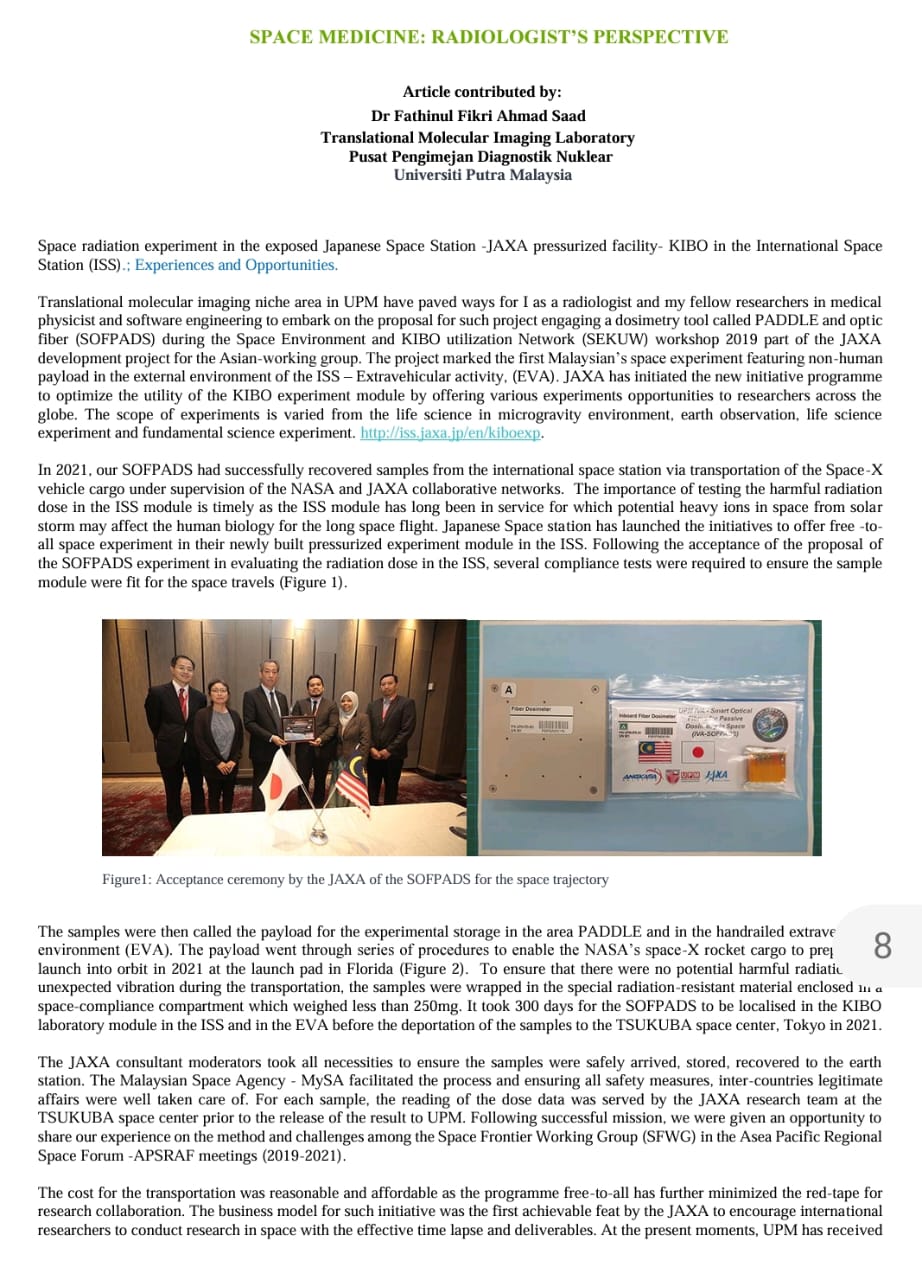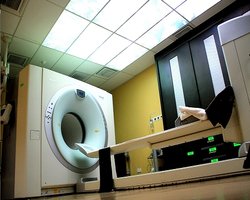INDONESIA - A radiation detector that uses smart optical fibers created by three scientists from Universiti Putra Malaysia (UPM) sent by the Japanese Space Exploration Agency (JAXA) to be tested on the International Space Station (ISS) in 2021 has received recognition as a successful flagship project under the collaboration of UPM - JAXA. At the APSRAF 29 conference which is taking place in Indonesia from 19th – 23rd September 2023, a total of 52 countries and 844 organizations have attended the conference.
There are two types of samples submitted by UPM, namely E-SOFPADS and I-SOFPADS. E-SOFPADS will be exposed to radiation outside the ISS around Japan's KIBO module using the Experiment Handrail Attachment Mechanism (ExHAM) facility while I-SOFPADS will be exposed to radiation inside the KIBO module, ISS. The experience and results of UPM's IVA and EVA experiments were presented through a montage insert https://youtu.be/ik8CVBVA3oo and shared with researchers who are actively pioneering the field of space medicine.
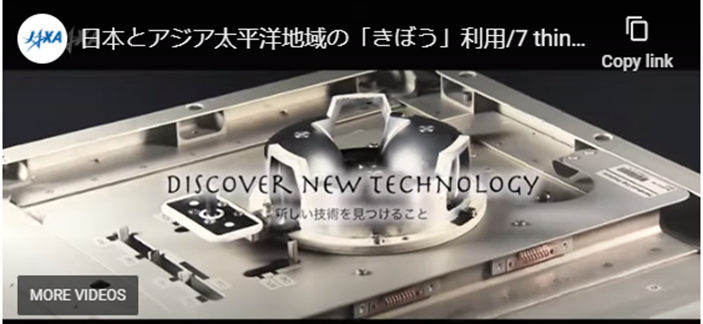
UPM's chief researcher, Associate Prof Dr. Noramaliza Mohd Noor and Prof Dr Fathinul Fikri Ahmad Saad, both from the Nuclear Diagnostic Imaging Center shared their views through a virtual conference in the "Space Frontier" working group at the conference.
This project is a research collaboration carried out with JAXA under the Memorandum of Agreement (MoA) between Universiti Putra Malaysia and the Japan Aerospace Exploration Agency (JAXA) and coordinated by ANGKASA (National Space Agency). The project is sponsored by UPM under the High Impact Grant this is the first step to observe the response of optical fibers to radiation in the microgravity environment and also its potential as a passive radiation detector for use in space. Normally this passive radiation detector is used to monitor the level of radiation received by astronauts working on the ISS.
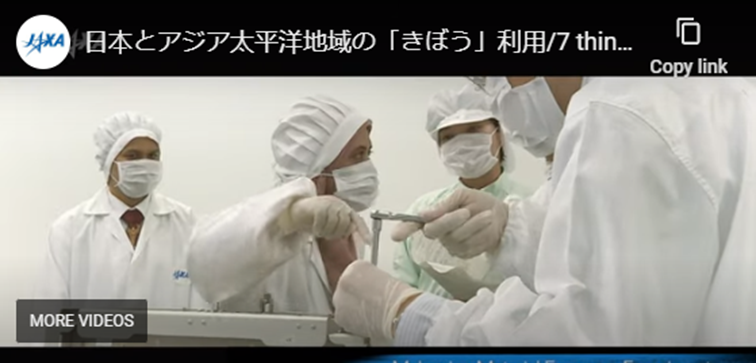
Among the achievements of this project are the involvement of a physics master's student, two intellectual property profile registrations and an award at the Malaysian Technology Expo 2022. Both tracer samples were sent back to BUMI to be analyzed by UPM at the Nuclear Diagnostic Imaging Center (PPDN), UPM and Dosimetry Laboratory, UPM Faculty of Medicine and Health Sciences.
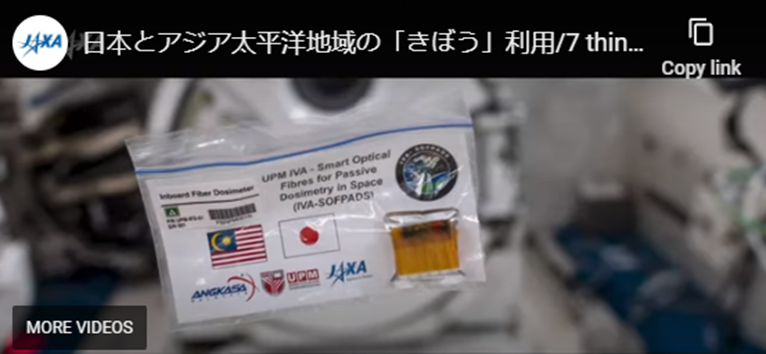
With JAXA's recognition through this research collaboration, it is hoped to create more opportunities and space for national researchers in general and specifically in the field of space exploration in the future
Date of Input: 21/09/2023 | Updated: 21/09/2023 | faidhi
MEDIA SHARING














